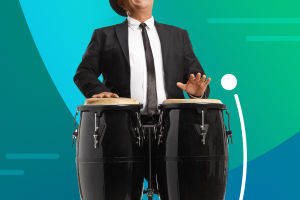The trombone, an integral part of orchestras, jazz bands, and marching bands, has a rich history dating back centuries. Known for its unique sliding mechanism, the trombone produces a smooth, resonant sound that sets it apart from other brass instruments.
For Lykkers interested in the historical evolution of this fascinating instrument, here's a guide to where it came from, its development over time, and its significant cultural impact.
Origins of the Trombone
The trombone traces its roots back to the 15th century in Europe. Originally known as the sackbut, the instrument was developed in Burgundy (modern-day France and Belgium) and became widely used in both sacred and secular music. The sackbut had a smaller, more delicate sound compared to the modern trombone.
Inventor/Development: The sackbut is believed to have evolved from the earlier slide trumpet, with enhancements made by Flemish instrument makers in the 1400s.
Name Evolution: The term "trombone" comes from the Italian word "tromba," meaning trumpet, with "trombone" meaning "large trumpet." By the 18th century, the name trombone became standard across Europe.
Evolution into the Modern Trombone
As musical styles evolved in the 17th and 18th centuries, so did the design and use of the trombone. It became a key instrument in Baroque music and later in classical orchestras, adding a robust, solemn sound to symphonies.
By the 19th century, technological advancements made the trombone louder and more versatile, allowing it to project in larger concert halls. This period also marked the rise of the valved trombone, though the traditional slide trombone remained more popular due to its smoother sound and ability to perform glissandos (sliding between notes).
Key Changes: The bell size increased for a more powerful sound, and tuning improvements allowed the trombone to fit into the modern chromatic scale.
The Trombone in Different Genres
The trombone’s adaptability across musical genres has solidified its place as a versatile instrument in various music forms:
1.Classical Music: The trombone became a prominent feature in symphonic compositions by composers such as Beethoven, Brahms, and Mahler.
2.Jazz: In the early 20th century, the trombone found a new home in jazz bands, with players like Glenn Miller pushing the boundaries of its melodic potential.
3.Marching and Brass Bands: Today, the trombone is a key player in marching bands and brass ensembles, thanks to its powerful projection and distinct tone.
Trombone Types
Over time, several types of trombones have been developed to suit different musical contexts:
Tenor Trombone: The most commonly used trombone, ideal for both classical and jazz music. Prices range from $500 to $3,000, depending on the quality and brand.
Bass Trombone: A larger trombone that produces a deeper, richer tone. Often used in orchestras and brass bands.
Alto Trombone: Smaller than the tenor trombone, it is used in certain orchestral works and was more common in the 18th century.
Valve Trombone: This trombone has valves instead of a slide and is commonly used in Latin and brass band music.
The Trombone Today
Today, the trombone is celebrated for its versatility and expressive range. From jazz clubs to concert halls, the trombone continues to inspire musicians and audiences worldwide. Modern trombones are available from renowned brands like Yamaha, Bach, and Conn, with prices ranging from $1,000 to $5,000, depending on the model.
Tips for Lykkers Interested in Learning the Trombone
Start with a Tenor Trombone: For beginners, the tenor trombone is an ideal starting point due to its balance between ease of play and versatility.
Practice Regularly: The slide mechanism requires regular practice to develop muscle memory for hitting the correct pitches.
Rent Before You Buy: Many music stores offer trombone rentals for $30 to $50 per month, allowing new players to explore the instrument before committing to a purchase.
Final Thoughts for Lykkers
The trombone’s journey from the 15th century to the modern day is a testament to its enduring appeal. Whether you're captivated by its role in classical music or its bold presence in jazz and brass bands, the trombone offers a rich history and a dynamic future. For Lykkers curious about picking up this brass classic, now is the perfect time to dive into its captivating sound.


